Historically, Fluke (or summer flounder) have rarely been targeted by fly fishermen. Instead, fluke have been considered by most to simply be a pleasant bycatch, More recently, however, fluke are being sought after more and more by northeast fly anglers.
Fluke have always played a major part in my life. I spent many years dragging nets for fluke up and down the New Jersey coast during the summer and in the winter offshore on the edge of the continental shelf from Virginia to the Hague line. It was how I supported my family. My commercial experience carried over to my recreational fly fishing passion which inevitably led me once again to chase the flat ones, only this time for pleasure. If there was one thing I learned during my commercial days that I would consider the most important element in understanding fluke, it would be tides. Tides are everything. Tides control the bait movements and bait determines where the summer flounder will be at any given time.
Most northeast fly anglers fish for fluke from the beach or around beach structure such as groins and jetties, both casting from shore and from a boat towards structure, sand bars or shoreline.
To be effective during times of strong tidal flow, you want to fish shallow and you want to fish tight. Shallow because, with most fly gear, you can't present effectively in deep water during strong tidal flow. Tight as in tight to the bottom because that is where the bait -- be it sand eels, spearing or any small prey -- have the least current to fight and greatest protection. During running tides, this is where the fluke will be. Sinking shooting heads or integrated full sinking lines are essential during these conditions. Intermediate lines are fine when casting from shore in water less than four feet deep.
At slack water or during the change of tides, bait and the fish that pursue them will often rise up in the water column. I'll give you my favorite example: one August, predawn morning in 2008, my fishing buddy and I were throwing small clousers to very large weakfish (aka grey trout) that had congregated outside of a salt pond which drained through some rocks into a main waterway in my home port of Cape May. At slack water. in 8 feet of water, the bait, spearing, rose up on the water column until they were being marauded top water by the trout. While still dark, I came tight on a fish which obviously had some shoulders but wouldn't take line. Once on the reel the fish just dogged me. After a 10 minute back and forth, we netted the fish which turned out to be a fluke. A big Fluke. We left the fish in the net on deck and went back fishing because the trout were going nuts at this point and they were big. Later, with enough light to finally see and the blitz about over, we checked out the flounder we had left on the deck and only then realized how big it was. In keeping a long story short: it is to this day the largest fluke ever caught on a fly rod -- weighing in at 8lbs 4oz and is an I.G.F.A world record for 12 lb tippet. The important thing to note here is that the fish was feeding just below the surface at slack water on bait that had been previously down tight to the bottom , no more than half an hour earlier when the tide was running . Big fluke will feed mid water as the bait moves up in the water column and even top water as I proven that August morning.
All fluke like the rocks but big fluke especially, which is why jetties and other rock formations are always another good area to look for bigger fluke. Throwing a heavy grain sinking line parallel to a jetty so the fly presents right next to the rocks can be extremely effective, especially when the fish leave the back waters and invade the surf during summer and fall. The big fly big fish theory doesn't always apply in this fishery. My biggest fluke have mostly all been caught on clousers, and not big ones. 1/0 would be large. As you'll be fishing in and near the rocks and presenting hard down in the sand, you'll definitely want a hook that rides point up.
The key to finding fluke, as is often the case, is to look for the bait. Big flounder need to eat a lot and won't waste their time on areas without forage. Think shallow, as in less than 8 feet of water, and most of all pay attention to tides. Tides determine bait movements both vertically and horizontally. As for world records: those come down to luck. Put the time in you will catch some big fluke and learn a new appreciation for a cool fish to target with a fly rod.




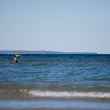











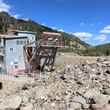
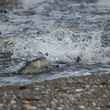




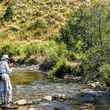



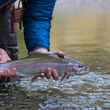
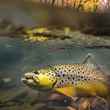



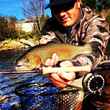
Comments